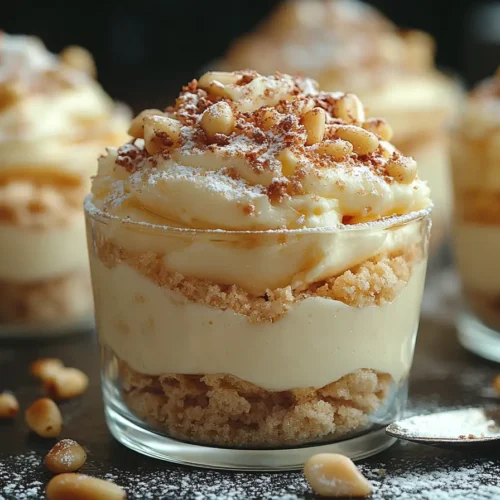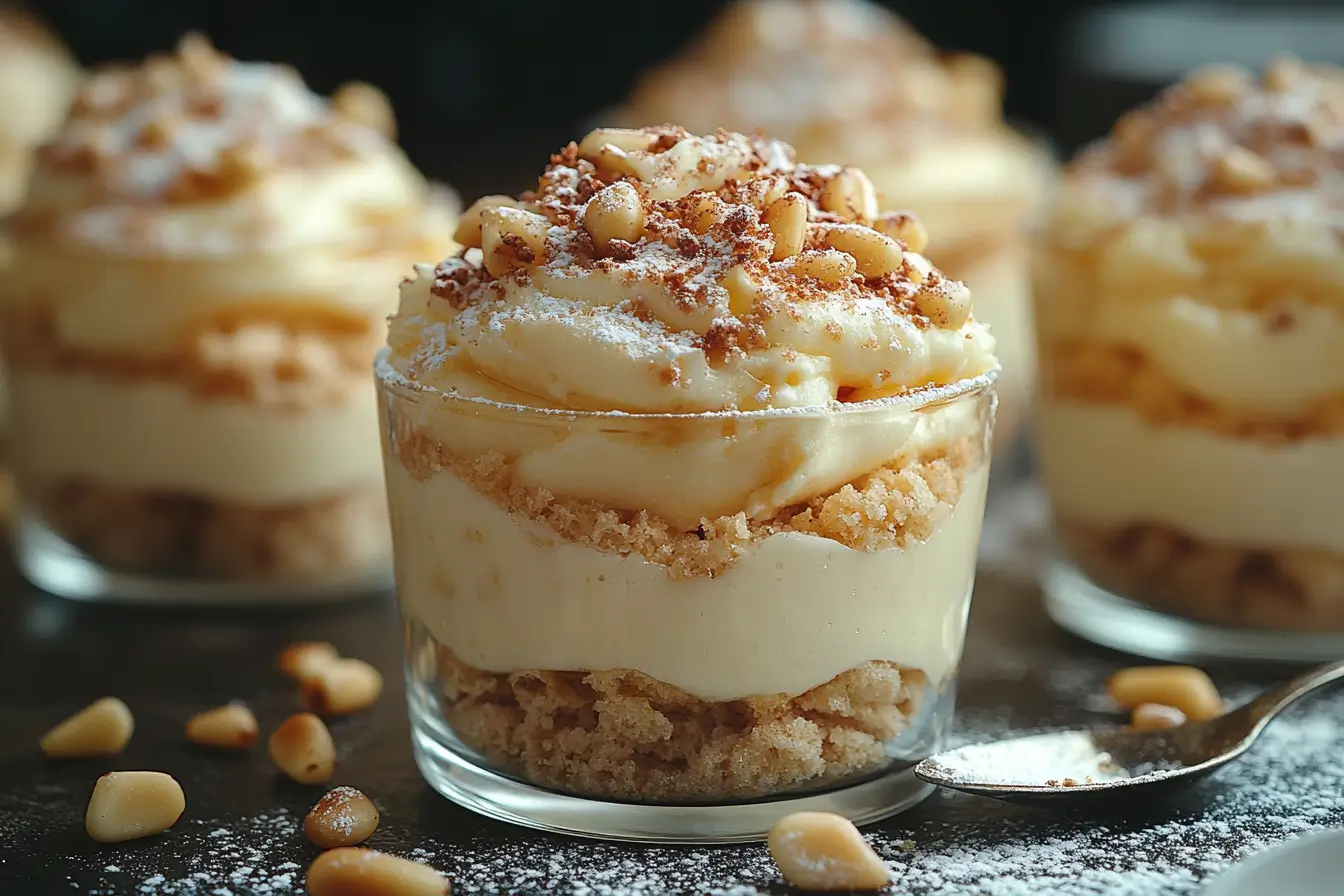Table of Contents
This guide explores the world of recipes using ‘Grandma’s Cream,’ focusing on different uses, variations, and techniques. We’ll cover what ‘Grandma’s Cream’ might be (assuming it’s a type of cream or custard), explore different recipes, and provide step-by-step instructions. We’ll also cover ingredient sourcing and troubleshooting common issues.
Essential Ingredients: Sourcing Quality Components
Dairy, Eggs, and Sweeteners
This section explains the main ingredients you need for recipes using “Grandma’s Cream.” We’ll talk about how to choose the best ones.
| Ingredients | Quantity | Note |
|---|---|---|
| Milk | Varies by recipe | Use whole milk for the richest flavor. |
| Cream (heavy or whipping) | Varies by recipe | Heavy cream is thicker; whipping cream is lighter. |
| Butter | Varies by recipe | Use unsalted butter so you can control the saltiness. |
| Eggs | Varies by recipe | Fresh eggs work best. |
| Sugar (granulated or powdered) | Varies by recipe | Granulated sugar is most common; powdered sugar is often used in frostings. |
| Vanilla Extract | 1-2 teaspoons (usually) | Pure vanilla extract tastes best. |
Flavor Boosters
Besides the basics, you might add other flavorings. These can include chocolate, fruit purees, or a touch of vinager for a tangy twist. The possibilities are many! Always check your specific recipe for the best amounts. Using high-quality ingredients makes a big difference in the taste of your final product.
Baking with ‘Grandma’s Cream’: Techniques and Tips
Mixing Methods
Mixing Grandma’s Cream into baked goods depends on the type of cream. For whipped cream, gently fold it in to keep its airiness. For thicker creams or custards, stir until evenly combined. Don’t overmix, which can make the baked goods tough.
Baking Temperatures and Times
Baking temperatures vary by recipe. Follow your recipe carefully. Using a thermometer helps ensure the correct internal temperature. Overbaking dries out cakes; underbaking leaves them gooey.
Cooling Techniques
Let cakes and cupcakes cool in their pans for a few minutes before transferring them to a wire rack. This prevents them from sticking and ensures even cooling. Cooling completely is important before frosting.
Troubleshooting Baking Problems
Overbaked goods are dry. Underbaked goods are gooey in the center. If your baked goods are too dry, try reducing the baking time next time. If they’re gooey, increase the baking time or temperature slightly. Always use a reliable recipe.
Crafting ‘Grandma’s Cream’: A Step-by-Step Guide
Making the Custard Base
To make Grandma’s Cream, assuming it’s a custard, you’ll need milk, cream, eggs, sugar, and vanilla. First, whisk together the eggs and sugar until light and fluffy. Then, slowly pour in the warm milk and cream, whisking constantly. This prevents the eggs from scrambling. Add the vanilla.
Cooking the Custard
Pour the mixture into a saucepan. Cook over medium-low heat, stirring constantly, until the custard thickens enough to coat the back of a spoon. This usually takes about 5-10 minutes. Don’t let it boil!
Cooling and Storing
Remove the custard from the heat and pour it into a bowl. Cover the bowl with plastic wrap, pressing the wrap directly onto the surface to prevent a skin from forming. Refrigerate until completely cool. This usually takes a few hours.
Consistency Options
For a thinner cream, use less egg. For a thicker cream, use more. You can also add cornstarch for extra thickness, but add it slowly to avoid lumps.
Flavor Variations
Grandma’s Cream is very versatile. For a chocolate version, add melted chocolate to the warm custard. For a fruity version, stir in your favorite fruit puree after cooking and cooling. A touch of vinager adds a unique tangy taste.
Serving and Storage: Maintaining Freshness
Serving Grandma’s Cream
Recipes using Grandma’s Cream taste best when served at the right temperature. Thicker custards are delicious served cold or at room temperature, while whipped creams are best enjoyed very cold, perhaps with a chilled dessert. Remember to consider the other ingredients in your recipe when deciding on the best serving temperature. If you’re looking for a perfect pairing, try this Strawberry Piña Colada with Malibu-Inspired Frosting its creamy, tropical flavors complement Grandma’s Cream beautifully.
Storing Leftovers
Proper storage keeps Grandma’s Cream fresh. Use airtight containers to prevent it from absorbing other smells in your refrigerator. Glass or plastic containers work well. If you made a custard-based Grandma’s Cream, press plastic wrap directly onto the surface before covering to stop a skin from forming.
Temperature Control
Refrigerate leftover Grandma’s Cream immediately. It’s best to use leftovers within 3-4 days for the best flavor and texture. Custards, especially, can change texture if they sit too long. Do not freeze Grandma’s Cream, as freezing can alter its texture and taste.
Flavor Variations: Experimenting with Grandma Cream
Adding Extracts
Vanilla is common, but try almond, lemon, or peppermint. A few drops change the flavor a lot. Start with a small amount and add more to taste.
Spices for Warmth
A pinch of cinnamon, nutmeg, or cardamom adds a warm, comforting taste. These spices work well in custards or whipped creams used in fall or winter desserts.
Fruit Purees
Pureed berries, peaches, or mangoes create fruity creams. Add the puree after cooking a custard, or mix it into whipped cream. The color and flavor will change the final product.
Other Flavor Ideas
For a tangy twist, add a little vinager to a custard. Chocolate chips or cocoa powder make a chocolate version. Coffee extract makes a coffee-flavored cream. Experiment to find your favorites! Remember to taste as you go and adjust to your liking.
Troubleshooting Common Issues
Curdled Grandma’s Cream
Curdling happens when the ingredients separate. This often occurs when you mix cold ingredients with hot ones too quickly. To prevent curdling, make sure your milk and cream are warm before adding them to the eggs and sugar. Whisk constantly while you slowly pour in the warm liquids. If curdling happens, try gently heating the mixture over low heat, whisking continuously, to try and re-combine the ingredients.
Lumpy Grandma’s Cream
Lumps can form if you don’t whisk the eggs and sugar well enough before adding the warm liquids. Always whisk until the mixture is light and fluffy. If lumps still appear, use a strainer to smooth the mixture. For custards, adding cornstarch slowly while whisking helps prevent lumps from forming.
Incorrect Consistency
If your Grandma’s Cream is too thin, you might need more eggs or cornstarch. Too thick? Use less egg and add a bit more milk or cream. Always follow your recipe carefully, but these small changes can make a big difference.
Separated Whipped Cream
Whipped cream separates if it’s over-whipped. Stop whipping as soon as it reaches soft peaks. Using cold cream and a clean bowl helps. If separation occurs, gently whisk in a little more cream to smooth the consistency.
Frequently Asked Questions About Grandma cream
What is Grandma’s Cream?
Grandma’s Cream isn’t a specific recipe. It’s a general name for a creamy mixture, possibly a custard, whipped cream, or heavy cream, often used in desserts. The exact recipe depends on family traditions.
Can I use different types of milk?
Yes, but whole milk usually gives the richest flavor. Recipes may change depending on the type of milk you use.
What if my custard is lumpy?
Lumps happen if you don’t mix the eggs and sugar well enough before adding warm milk. Whisk thoroughly until light and fluffy to prevent this. A strainer can help smooth it out afterward.
How do I store leftover Grandma’s Cream?
Refrigerate leftovers in an airtight container. For custards, press plastic wrap directly onto the surface to prevent a skin from forming. Use within 3-4 days for best results. Don’t freeze it.
Baking Success with Grandma’s Cream
Making the Most of Your Recipe
This guide showed you how to use Grandma’s Cream in your baking. Remember, fresh ingredients are key! Following the instructions carefully helps you avoid problems like lumpy custard or separated whipped cream.
Tips for Great Results
Use high-quality dairy products. Pay attention to mixing techniques. Let your cakes cool completely before frosting. Experiment with different flavors to discover your own favorites.
Enjoy Your Baking!
This guide will help you understand and utilize ‘Grandma’s Cream’ in your baking. Remember to use fresh ingredients and follow the instructions carefully for the best results!

Grandma’s Cream Custard
Equipment
- Whisk
- Saucepan
- Bowl
- Plastic Wrap
Ingredients
- Varies Milk Whole milk for richest flavor
- Varies Cream (heavy or whipping) Heavy cream is thicker; whipping cream is lighter
- Varies Eggs Fresh eggs work best
- Varies Sugar (granulated or powdered) Granulated sugar is most common; powdered sugar is often used in frostings
- 1-2 teaspoons Vanilla Extract Pure vanilla extract tastes best
- Optional Cornstarch For extra thickness, add slowly to avoid lumps
- Optional Chocolate Melted, added to warm custard
- Optional Fruit Puree Added after cooking and cooling
- Optional, small amount Vinegar Adds a tangy taste
Instructions
- Whisk together eggs and sugar until light and fluffy.
- Slowly pour in warm milk and cream, whisking constantly.
- Add vanilla extract.
- Pour mixture into a saucepan. Cook over medium-low heat, stirring constantly, until thickened (5-10 minutes). Do not boil.
- Remove from heat, pour into a bowl. Cover with plastic wrap, pressing it directly onto the surface.
- Refrigerate until completely cool (a few hours).
